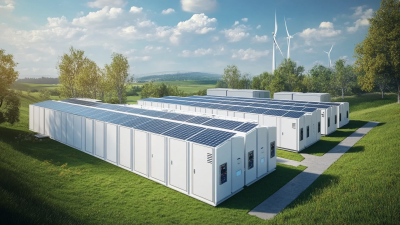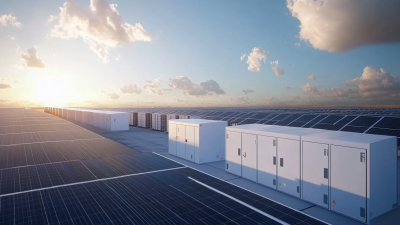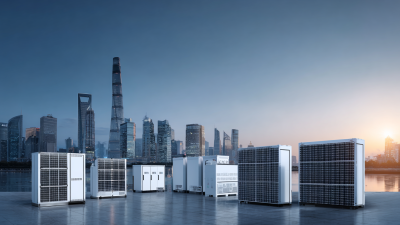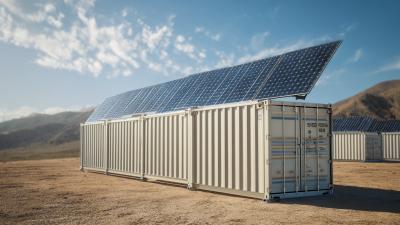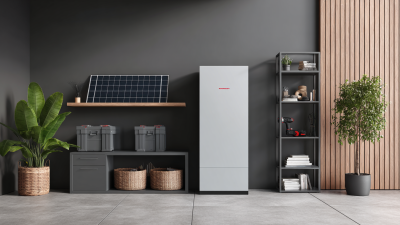As the demand for sustainable energy solutions continues to rise, the role of Hybrid Energy Storage Systems (HESS) has gained increased attention in the energy sector. HESS integrates multiple energy storage technologies, such as batteries and supercapacitors, to optimize performance and efficiency. According to a recent market analysis by Research and Markets, the global hybrid energy storage system market is projected to grow at a compounded annual growth rate (CAGR) of over 20% between 2023 and 2030. This significant growth can be attributed to the increasing adoption of renewable energy sources and the necessity to enhance grid stability and reliability. By unlocking the potential of HESS, industries can effectively address the intermittent nature of renewable energy, thus paving the way for a sustainable energy future that balances generation and demand efficiently.
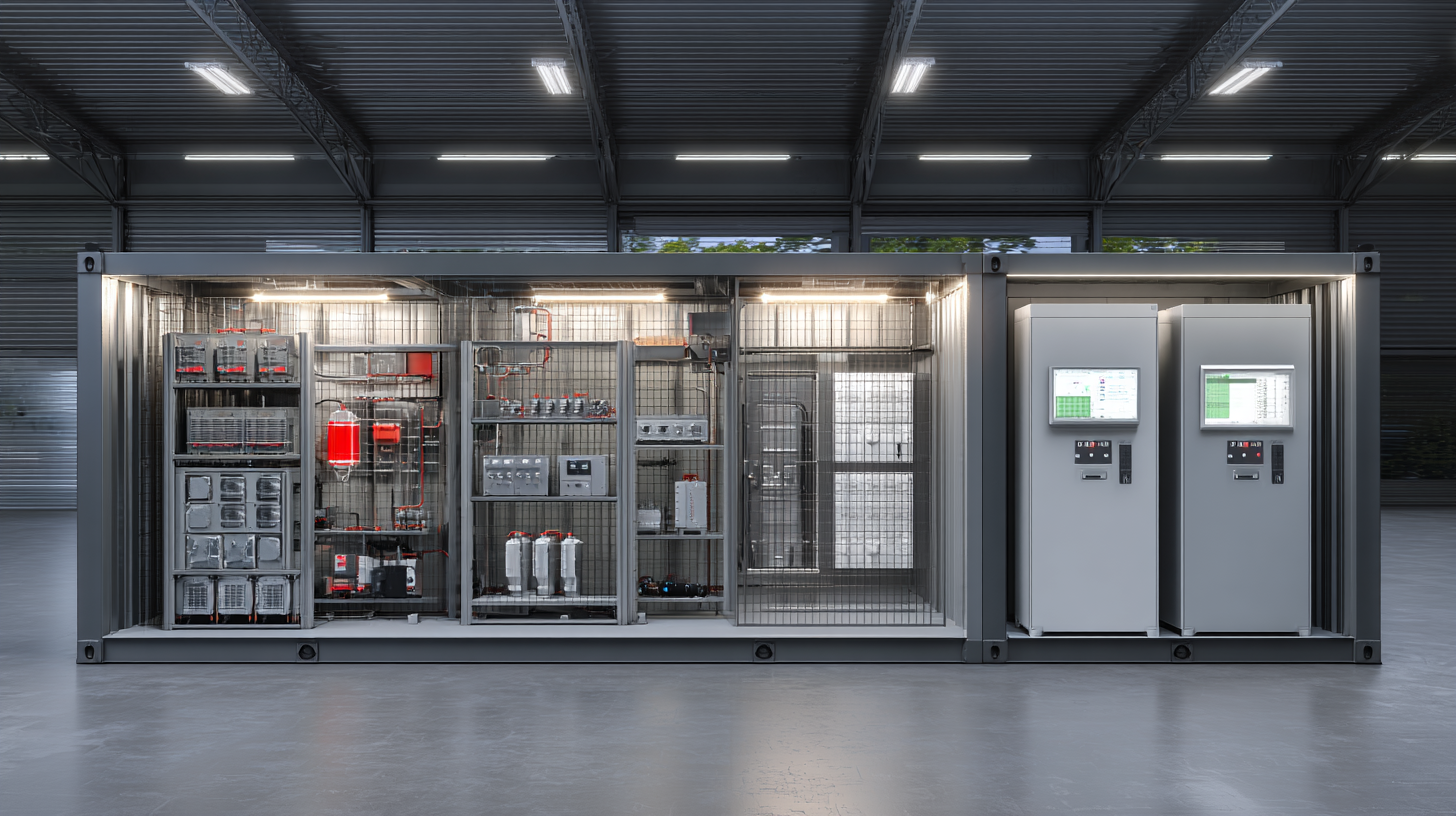
Hybrid Energy Storage Systems (HESS) are rapidly emerging as a pivotal solution for bridging the gap in renewable energy integration. According to a report by the International Renewable Energy Agency (IRENA), the global energy storage market is expected to grow significantly, reaching over 200 GWh by 2030. This surge highlights the critical need for efficient storage solutions that can manage peak load demands and provide stability to the electricity grid. By combining the strengths of various storage technologies, such as batteries, supercapacitors, and flywheels, HESS can optimize energy management and enhance the reliability of renewable resources, effectively addressing intermittency issues associated with solar and wind projects.
Furthermore, a study by Research and Markets indicates that the hybrid energy storage market is projected to witness a Compound Annual Growth Rate (CAGR) of over 20% between 2022 and 2027. This growth is largely driven by ongoing investments in infrastructure and advancements in energy storage technologies that allow for scalable and flexible deployment. As governments and private sectors prioritize sustainability and carbon reduction goals, the integration of HESS not only fosters a more resilient energy system but also plays a vital role in achieving global climate targets. The synergy between renewable energy sources and advanced storage solutions promises a sustainable energy landscape where reliability and efficiency coexist.
The hybrid energy storage market is poised for significant growth, with projections indicating that it could reach a valuation of over $16 billion by 2025. This surge is driven by the increasing demand for reliable and efficient energy storage solutions, particularly in the wake of the global push towards renewable energy sources. According to a report by ResearchAndMarkets, the market is expected to grow at a compound annual growth rate (CAGR) of approximately 25% from 2020 to 2025, reflecting the escalating need for energy storage that can seamlessly integrate various energy sources, including lithium-ion batteries, ultracapacitors, and flywheels.

Moreover, hybrid energy storage systems are becoming essential in managing the intermittent nature of renewable energies like wind and solar power. A joint study conducted by Bloomberg New Energy Finance highlights that investments in hybrid systems are vital for achieving the energy transition goals set by numerous countries. By combining different storage technologies, these systems not only enhance energy security but also contribute significantly to reducing greenhouse gas emissions. As we progress toward 2025, the emphasis on sustainability will likely further fuel investments and innovations in hybrid energy storage solutions, making them a cornerstone of future energy infrastructures.
 Hybrid energy storage systems (HESS) represent a significant advancement in the quest for sustainable energy solutions. By combining different storage technologies, such as batteries and supercapacitors, HESS can enhance the efficiency of energy capture, storage, and delivery. This technological innovation allows for improved responsiveness to fluctuating energy demands, making it an ideal solution for renewable energy integration. As we harness the power of wind and solar, HESS can help smooth out supply inconsistencies, ensuring a steady energy flow.
Hybrid energy storage systems (HESS) represent a significant advancement in the quest for sustainable energy solutions. By combining different storage technologies, such as batteries and supercapacitors, HESS can enhance the efficiency of energy capture, storage, and delivery. This technological innovation allows for improved responsiveness to fluctuating energy demands, making it an ideal solution for renewable energy integration. As we harness the power of wind and solar, HESS can help smooth out supply inconsistencies, ensuring a steady energy flow.
Tips for maximizing the efficiency of hybrid systems include prioritizing the selection of complementary storage technologies that suit specific applications. For example, pairing a high-capacity battery with a quick-response supercapacitor can optimize both energy and power delivery. Additionally, regular monitoring and predictive maintenance of the system can prevent inefficiencies and prolong the lifespan of your energy storage components.
Another crucial aspect is the implementation of advanced control algorithms that can intelligently manage energy distribution based on real-time data. This not only maximizes the use of stored energy but also minimizes waste. Keeping abreast of technological developments and adopting smart grid solutions will further enhance the sustainability of hybrid systems, paving the way for a greener energy future.
The economic viability of hybrid energy storage systems (HESS) is increasingly becoming a focal point for sustainable solutions in the energy sector. Recent studies indicate that as the demand for renewable energy surges, the implementation of HESS can significantly optimize costs and enhance grid stability. For instance, a thorough techno-economic analysis suggests that hybrid systems integrating Battery Energy Storage (BES) and renewable sources like photovoltaics can reduce operational costs by as much as 30%, while also utilizing advanced models to ensure efficient energy dispatch.
One critical finding from the report “The CEO's guide to generative AI: Cost of compute” highlights that computing costs could increase by 89% between 2023 and 2025, raising important questions about budgeting for innovative energy solutions. Therefore, incorporating machine learning and optimization into HESS can mitigate these financial pressures by enhancing system efficiency. By leveraging Model Predictive Control (MPC) and Particle Swarm Optimization (PSO) methodologies, operators can further fine-tune energy distribution to meet fluctuating demands in real-time.
**Tip:** When considering the adoption of hybrid energy storage systems, organizations should conduct a comprehensive cost-benefit analysis to identify potential savings and efficiency gains. Understanding market trends in hybrid systems will also enable better strategic planning and investment decisions in the coming years.
Hybrid Energy Storage Systems (HESS) have emerged as a vital solution in addressing the increasing demand for sustainable energy sources. A recent report by BloombergNEF highlights that the global hybrid energy storage market is projected to grow significantly, reaching $7.3 billion by 2030, driven by the integration of renewable energy sources and the need for reliable power supply. In real-world applications, companies such as Tesla and Siemens have successfully implemented HESS to optimize energy efficiency in various sectors. For instance, Tesla’s deployment of hybrid systems in commercial settings has demonstrated peak shaving capabilities, reducing energy costs by up to 40%.
Additionally, case studies from the European Commission show that integrating batteries with supercapacitors in public transport systems has yielded improved performance and operational efficiency. A bus fleet in Hamburg reported an increase in energy recovery by 25%, significantly lowering emissions and operational expenses. This example exemplifies how HESS can facilitate the transition towards cleaner transportation while meeting the growing energy demands of urban areas. As more businesses and cities harness these systems, the role of hybrid energy storage in fostering sustainable solutions cannot be overlooked.
| Case Study | Location | Hybrid Storage Technology | Capacity (MW) | Application | Impact |
|---|---|---|---|---|---|
| Urban Solar-Hydro Project | City A, Country X | Solar + Pumped Hydro | 10 | Peak Shaving | Reduces peak demand by 30% |
| Rural Wind-Battery Initiative | Village B, Country Y | Wind + Lithium-ion Batteries | 5 | Energy Access | Provides 24/7 electricity to 150 households |
| Industrial Hybrid Storage Facility | Plant C, Country Z | Natural Gas + Flywheel Storage | 20 | Load Management | Increases operational efficiency by 15% |
| Community Battery Storage Network | Town D, Country W | Solar + Community-owned Batteries | 3 | Energy Resilience | Improves grid reliability during outages |
